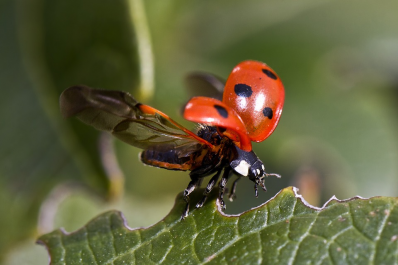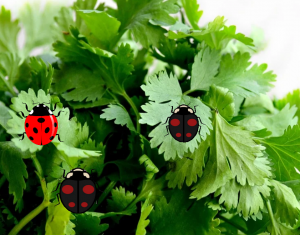Number (multiplication and division): Ladybird Spots
The Problem
Dr Greenfingers, a keen mathematician and gardener, needed to get rid of the aphids that were destroying his precious parsley plant. He decided to place a mixture of red 7-spot ladybirds and black 4-spot ladybirds on the plant as he knew that both species loved eating aphids in large quantities.
One morning, Dr Greenfingers decided to count the total number of ladybird spots that were on the parsley plant. The number that he counted was less than 40 and an odd number.
Can you work out how many 4-spot ladybirds and how many 7-spot ladybirds could have been on Dr Greenfinger’s parsley plant?
There is more than one answer to this problem! How might you convince a partner that you have found all the possible solutions?

Did you know?
The most common ladybird in the UK is the 7-spot ladybird, which has shiny, red wing cases and seven black spots. Over the course of a year, a single 7-spot ladybird will gobble more than 5,000 aphids!
Visualising the Problem and Getting Started
If there was one 4-spot ladybird and one 7-spot ladybird on the parsley plant, how many ladybird spots would there be altogether? Is this an odd number of spots?
Look carefully at the picture below. How many spots are there altogether? (Do not count white spots/markings.) Is this an odd number of spots?


 Sign in
Sign in

